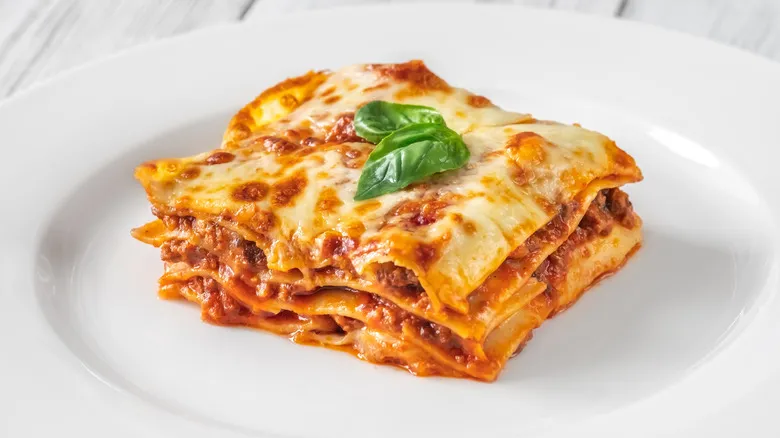Layering your lasagna noodles in a Bundt pan
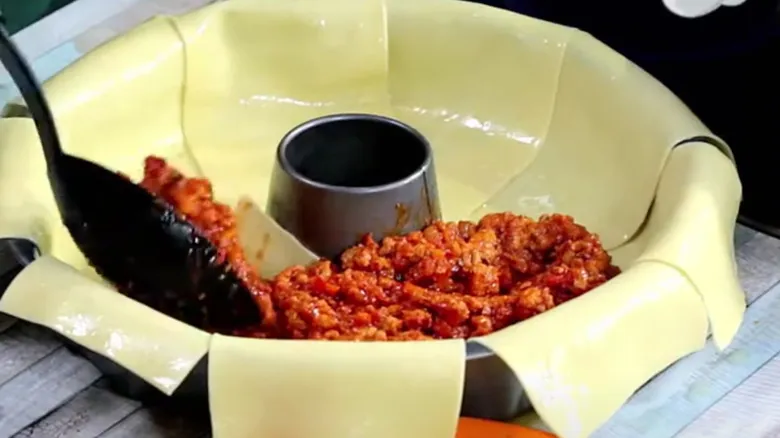
After greasing your pan, start assembling your lasagna ring by placing the noodles in the pan with the ends of the pasta sheets resting against the "nozzle" in the center. There's no need to pull each pasta sheet all the way up the nozzle; simply positioning them at the base will suffice.
Layer the noodles to create a fan-like arrangement, where one end of each noodle begins at the center of the Bundt pan and the other end hangs over the edge. Continue fanning the noodles around the entire pan until the interior is fully covered.
For the remaining layers of noodles, you have a couple of choices. You can either take some of your al dente lasagna pasta and cut the noodles into smaller pieces to fit, or you can opt for "mini" lasagna noodles, such as Garofala's Mafalda Corta, for the inner layers of your lasagna.
In the second option, these smaller pasta pieces resemble lasagna noodles but are shorter and narrower. Their size allows you to position them almost parallel to the sides of the pan. The layers of noodles may not snugly fit against the pan's walls, but you can address this later by folding the ends of the larger noodles over the top of the dish.
Prepping your other ingredients
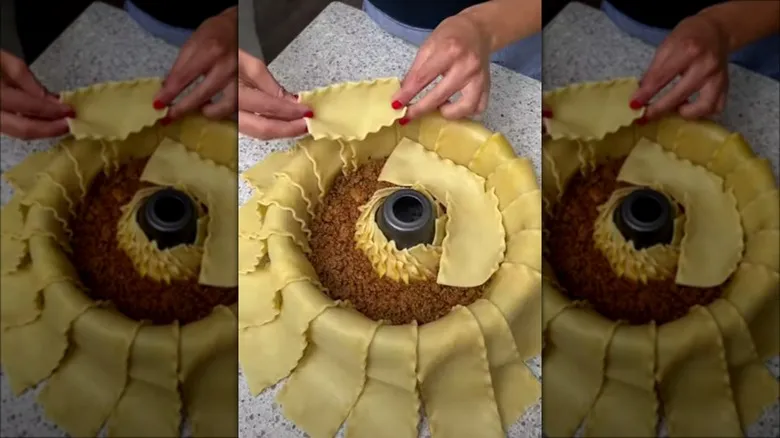
Some classic lasagna recipes utilize raw ingredients, allowing you to begin with uncooked noodles, raw ground beef or turkey, unmelted cheese, and fresh vegetables. Rest assured that during the typical baking process, all these components, including the dry noodles, will cook thoroughly in the oven. However, since you are using pre-cooked pasta for this recipe, it’s essential to also cook the other ingredients. If you skip this step, you risk having some parts of the lasagna remain uncooked.
To prepare the filling for your lasagna, sauté ingredients such as onions, garlic, carrots, and other aromatics in a separate pan. Do the same for the meat and any vegetables that require softening through cooking, like eggplant or bell peppers. They don’t need to be fully cooked, as they will continue to cook in the oven; you just want to give them a head start.
Next, add these cooked ingredients to the Bundt pan. Layer them by alternating meat, ricotta or mozzarella cheese, vegetables, and tomato or béchamel sauce with some cooked noodles, just as you would in a rectangular pan. At this point, don’t worry about the fanned noodles hanging over the edges of the Bundt pan; save that task for the end.
Finishing your pasta dish
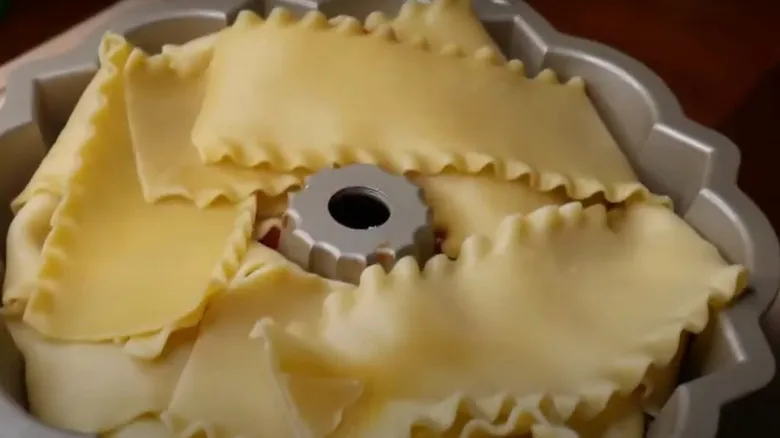
After you've added your final layer of pasta sheets, fold the ends of the fanned noodles over until they meet at the center. Continue wrapping each noodle in this manner until the entire top of the lasagna is covered with cooked noodles. Bake the pasta ring in the Bundt pan for 45 to 50 minutes. Once it's out of the oven, allow it to rest on the counter for up to an hour to let the ingredients set properly.
When you're ready to serve, place a plate slightly larger than the pan on top and carefully flip the entire assembly over. The lasagna ring should come out in one piece, similar to how a Bundt cake would, provided you greased the pan beforehand. If you're unsure about this process, consider using a silicone pan, such as Silivo's 7-inch bakeware. These flexible pans make it easier to twist and maneuver the edges until the lasagna releases from the sides. A standard Bundt pan, like Nordic Ware's original design, will also work well.
To finish, garnish your lasagna with a sprinkle of grated cheese, some chopped parsley, a pinch of salt, and a drizzle of your favorite sauce. For the final touch, place a small bowl of marinara sauce in the center of the ring, making the dish perfect for dipping, delicious, and ready for any gathering.
Recommended

The 2 Kitchen Items Kardea Brown Can't Live Without

French Vs Dutch Ovens: What's The Big Difference?

Andrew Zimmern Shared His 4 Must-Have Kitchen Tools
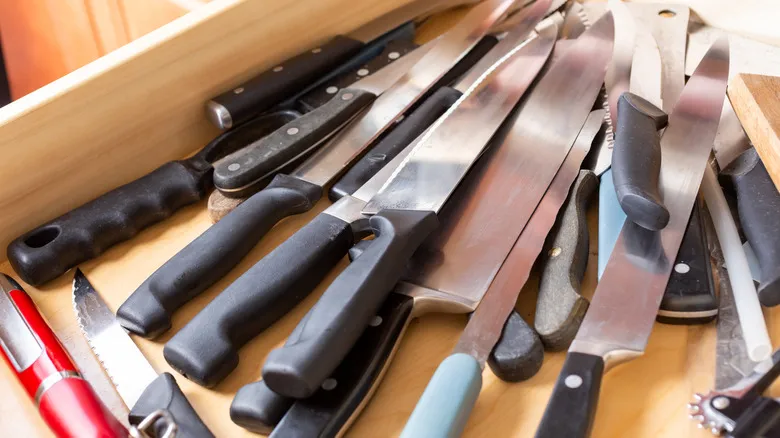
Why You Should Stop Storing Knives In That Random Kitchen Drawer
Next up

